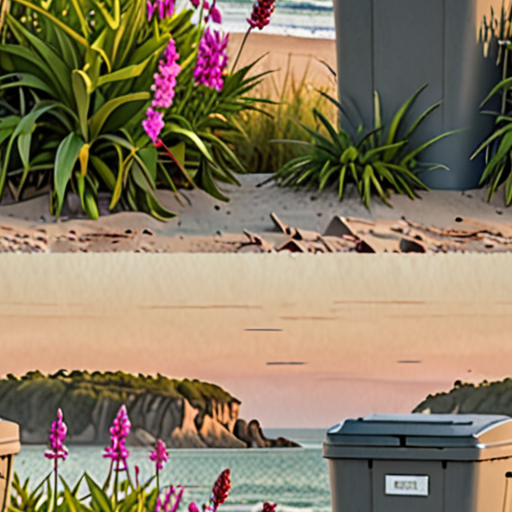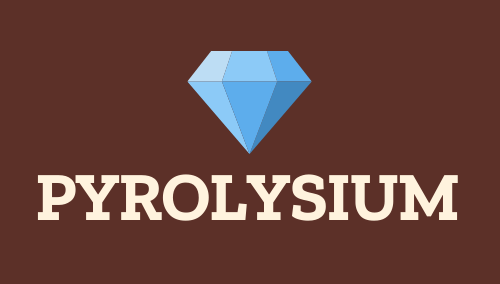In today’s world, where environmental concerns are at an all-time high, embracing eco-conscious waste solutions has become a necessity rather than a choice. As we strive towards creating a greener tomorrow, it’s essential to understand the most environmentally friendly ways to handle waste, from understanding eco-friendly waste management options to implementing sustainable practices in our daily lives. By adopting eco-conscious habits and making informed choices about the products we use and the companies we support, we can significantly reduce our ecological footprint and contribute to a healthier planet. In this article, we’ll delve into the world of eco-conscious waste solutions, exploring effective strategies for managing organic waste, innovative approaches to biodegradable waste disposal, and practical applications of the 5 R’s in daily life.

The Most Environmentally Friendly Way to Handle Waste
We believe that recycling is the most sustainable waste management option, but there are several other methods worth considering.
- Pyrolysis
- Composting
- Upcycling
- Zero-Waste Initiatives
- Waste-to-Energy Technologies
At Pyrolysium, we’re dedicated to educating and inspiring people about sustainable living and eco-friendly technologies, with a focus on pyrolysis—a process that transforms waste materials into valuable resources like biochar.
Through our informative blog posts, we aim to raise awareness about how individuals and communities can reduce their environmental impact, adopt greener practices, and embrace innovative solutions to address waste management and climate change.
Our goal is to provide practical insights into sustainability, eco-technology advancements, and actionable steps for those passionate about environmental conservation.
Composting is another effective method for managing organic waste, turning food scraps and yard trimmings into nutrient-rich soil amendments.
This approach reduces greenhouse gas emissions, conserves water, and promotes healthy plant growth.
Upcycling involves transforming discarded materials into new products of greater value, reducing waste and promoting creativity.
This approach encourages innovation and resourcefulness, helping to minimize the environmental impacts associated with traditional manufacturing processes.
Zero-waste initiatives aim to eliminate waste altogether, encouraging businesses and individuals to adopt circular economy principles.
These efforts promote sustainable consumption patterns, reduce pollution, and conserve natural resources.
Waste-to-energy technologies convert non-recyclable waste into electricity or heat, reducing landfill disposal and minimizing greenhouse gas emissions.
These systems offer a promising solution for managing municipal solid waste, promoting energy independence, and mitigating climate change.
While these alternatives have their advantages, recycling remains the most widely accepted and effective method for managing waste.
By combining these approaches, we can work towards a more sustainable future, reducing our environmental footprint and promoting a healthier planet for generations to come.
Best Solution to Get Rid of Biodegradable Waste
Treating and composting biodegradable waste is a viable option, but there are alternative methods worth considering.
- Pyrolysis Technology
- Benefits of Pyrolysis
- Reduced greenhouse gas emissions
- Increased energy efficiency
- Potential for carbon sequestration
- Anaerobic Digestion
- Types of Anaerobic Digestion
- Wet anaerobic digestion
- Dry anaerobic digestion
- Composting
- Types of Composting
- Hot composting
- Cold composting
- Vermicomposting
- Recycling and Upcycling
- Examples of Recycling and Upcycling
- Paper products made from recycled paper
- Clothing made from repurposed plastic bottles
- Furniture made from reclaimed wood
Pyrolysis is a thermal decomposition process that converts organic waste into valuable resources like biochar, syngas, and bio-oil.
Pyrolysis offers several advantages, including:
Anaerobic digestion is a biological process that breaks down organic matter in the absence of oxygen, producing biogas and a nutrient-rich fertilizer.
There are two primary types of anaerobic digestion:
Composting is a natural process that involves microorganisms breaking down organic matter into a stable humus-like material.
There are various types of composting, including:
Recycling and upcycling involve transforming waste materials into new products, reducing the need for virgin raw materials and minimizing waste disposal costs.
Some examples of recycled and upcycled products include:
Ultimately, the best solution to get rid of biodegradable waste depends on various factors, including the type and quantity of waste, available technology, and local regulations.
By exploring these alternatives and implementing effective waste management strategies, we can reduce our environmental footprint and promote a more sustainable future.

Solutions to Reducing Environmental Waste
We’re committed to helping individuals and communities reduce their environmental impact through sustainable living and eco-friendly technologies.
-
Reduce Single-Use Plastics
One simple yet effective solution is to reduce our reliance on single-use plastics. We can start by carrying reusable bags, water bottles, and coffee cups. Many cities now offer refill stations for water and other essentials, making it easier to ditch disposable plastics.
-
Implement Recycling Programs
A well-implemented recycling program can significantly reduce waste sent to landfills. By separating recyclables from trash and participating in community recycling initiatives, we can conserve natural resources and decrease greenhouse gas emissions.
-
Compost Organic Waste
Food waste and yard trimmings can be composted to create nutrient-rich soil for gardens and farms. This reduces the need for synthetic fertilizers and helps sequester carbon dioxide from the atmosphere.
-
Upcycle and Repurpose
Get creative and find new uses for items you might otherwise throw away. Upcycling and repurposing can breathe new life into old furniture, clothing, and household items, reducing the demand for new, resource-intensive products.
-
Support Sustainable Agriculture
Choose locally sourced, organic produce whenever possible to reduce transportation emissions and support environmentally friendly farming practices. Consider joining a community-supported agriculture (CSA) program or visiting your local farmer’s market.
-
Conserve Energy and Water
Making small changes to our daily habits can have a significant impact on energy and water consumption. Turn off lights, electronics, and taps when not in use, and explore energy-efficient appliances and renewable energy options for your home.
-
Participate in Community Clean-Ups
Join local clean-up events, park cleanups, or beach cleanups to help remove litter and debris from public spaces. This not only beautifies our environment but also raises awareness about the importance of waste reduction and proper disposal.
-
Invest in Eco-Friendly Products
When shopping for household goods, personal care items, and cleaning supplies, opt for products made from sustainable materials, biodegradable packaging, and minimal waste. Look for certifications like EPA Safer Choice or Leaping Bunny to ensure you’re supporting environmentally responsible brands.
-
Advocate for Policy Change
Encourage your representatives to implement policies promoting waste reduction, recycling, and sustainable practices. Support organizations working towards environmental protection and participate in advocacy campaigns to drive meaningful change.

Sustainable Waste Management Strategies
The 5 Rs: Refuse, Reduce, Reuse, Repurpose, and Recycle are fundamental principles of sustainable waste management.
-
Refuse
Refusing unnecessary items reduces waste generation. Be mindful of packaging, choose products with minimal or biodegradable packaging, and decline single-use plastics.
-
Reduce
Reducing consumption decreases waste production. Adopt a minimalist lifestyle, buy in bulk, and choose products with minimal packaging.
-
Reuse
Reusing items extends their lifespan and conserves resources. Repurpose old items, donate gently used goods, and use reusable bags and containers.
-
Repurpose
Repurposing gives new life to discarded items. Get creative with DIY projects, turn old items into planters or decorations, and find alternative uses for household items.
-
Recycle
Recycling transforms waste into valuable resources. Participate in curbside recycling programs, compost food waste, and recycle paper, plastic, glass, and metal.
Implementing these strategies requires a mindset shift towards sustainability and a commitment to reducing waste. By adopting the 5 Rs, individuals and businesses can significantly contribute to a more environmentally friendly future.
At Pyrolysium , we believe in empowering individuals to take control of their waste management practices and promoting sustainable living through education and innovation.
For more information on sustainable waste management and eco-friendly technologies, visit our website and explore our resources on Sustainability and Eco-Technology .
Additionally, learn about the benefits of Pyrolysis and its role in transforming waste into valuable resources.
By working together, we can create a more sustainable future and reduce waste generation.
The 5 Rs of Waste Management
The 5 Rs of waste management are essential principles that guide us towards reducing our ecological footprint and promoting sustainable living.
-
Refuse
Refusing unnecessary items reduces waste generation and helps minimize packaging waste. By saying no to single-use plastics, straws, and bags, we can significantly decrease the amount of waste sent to landfills.
-
Reduce
Reducing consumption is crucial in minimizing waste production. We can start by buying products in bulk, choosing items with minimal packaging, and avoiding impulse purchases.
-
Reuse
Reusing items extends their lifespan and reduces the need for new, resource-intensive products. From reusable bags and containers to donating gently used items, reusing is an effective way to reduce waste.
-
Repurpose
Repurposing involves finding new uses for items that would otherwise be discarded. This creative approach to waste reduction encourages innovation and reduces waste sent to landfills.
-
Recycle
Recycling is a vital step in the waste management process. By recycling paper, plastic, glass, and metal, we conserve natural resources, reduce landfill waste, and lower greenhouse gas emissions.
By implementing these 5 Rs, we can significantly reduce waste generation, promote sustainable living, and contribute to a healthier environment for future generations.

What is a Smart Waste Bin?
A smart waste bin is an intelligent waste management system equipped with advanced technology to monitor and manage waste disposal efficiently. These bins are designed to optimize waste collection routes, reducing unnecessary pickups and minimizing waste-related issues.
One of the primary features of smart waste bins is their ability to detect the fill level of the bin using sensors.
- The sensor data is then transmitted wirelessly over WiFi or Bluetooth, enabling waste management teams to track the fill levels remotely.
- This real-time monitoring allows for optimized collection routes, reducing fuel consumption and lowering emissions.
- Additionally, smart waste bins often come equipped with features such as:
- Compaction mechanisms to increase storage capacity
- Odor control systems to minimize unpleasant smells
- Alert systems to notify waste management teams when the bin needs to be emptied
Benefits of Smart Waste Bins
Smart waste bins offer numerous benefits, including:
- Improved waste management efficiency
- Reduced waste-related costs
- Increased public safety through reduced odors and pests
- Enhanced community engagement through real-time monitoring and feedback
Competitors in the Market
Several companies are developing and marketing smart waste bins, including:
- Wastequip
- Donaldson Company
- Toter
Conclusion
Smart waste bins are revolutionizing the way we manage waste, offering improved efficiency, reduced costs, and increased public safety. By leveraging advanced technology and innovative design, these bins are poised to become an essential component of modern waste management systems.

0 Comments